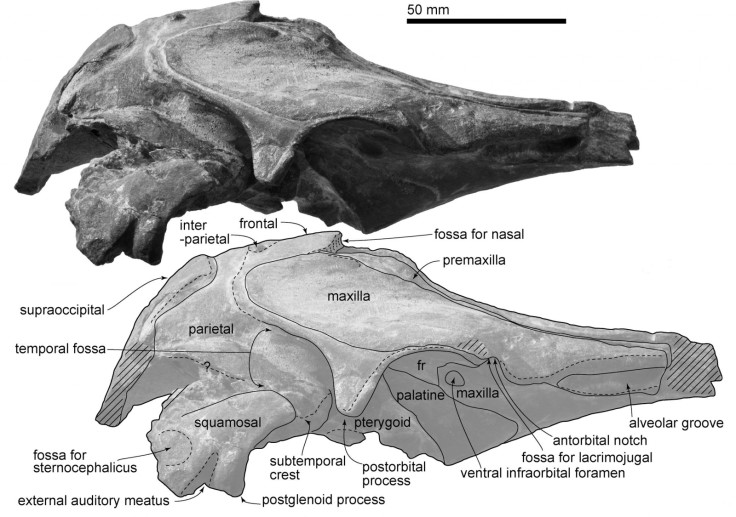Urkudelphis chawpipacha: New species of ancient dolphin discovered that lived 20-30 million years ago
The skull is one of the few dolphin fossils found near the Equator.

Researchers have discovered a fossilised skull in Ecuador belonging to an ancient species of dolphin, according to a study published in the open-access journal PLOS-ONE.
While the exact age of the remains is unclear, the animal is thought to have lived during the Oligocene period, which extends from about 33.9 million to 23 million years ago.
Yoshiro Tanaka, of the Osaka Museum of Natural History in Japan, and his colleagues came across the small skull in 2015 while conducting research in Santa Elena, a province on the Ecuadorean coast.
Based on the distinctive facial features of the juvenile skull – which included a crest of bone in the centre above the eye sockets - they were able to identify the bones as belonging to a dolphin but a previously unknown species with an estimated body length of around 1.7 metres.
The dolphin has been named Urkudelphis chawpipacha. The first part of the name is a combination of the Kichwa (a Quechuan language spoken in Ecuador) word for mountain, in reference to the village of Montañita near where the fossil was found, and the Greek word for dolphin.
The second part of the name combines "chawpi", Kichwa for "half" or "middle", with "pacha" ("the world").
The skull is one of the few dolphin fossils found near the Equator, indicating that cetaceans (a group of aquatic mammals which includes whales, dolphins and porpoises) living in the Oligocene may have been widely distributed in tropical waters.
Dolphin fossils are usually found near more temperate regions, such as the American north-west, New Zealand and northern Japan.
After carrying out a genetic analysis, the authors suggest that the new species may be the ancestor of modern river dolphins (Platanistoidea), which includes five modern species and two subspecies.
Because they are limited to freshwater environments, river dolphins are extremely vulnerable to habitat destruction and are under severe threat of extinction.





















